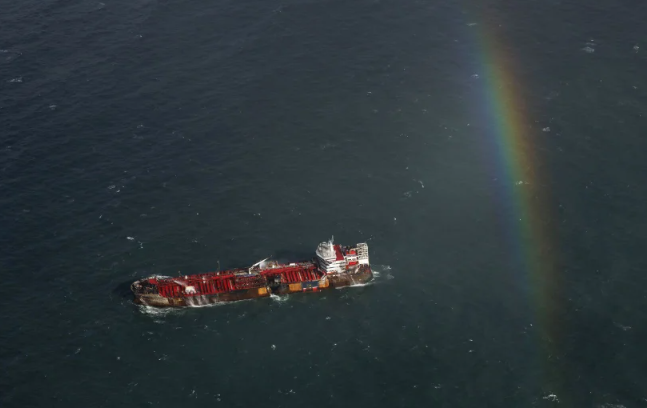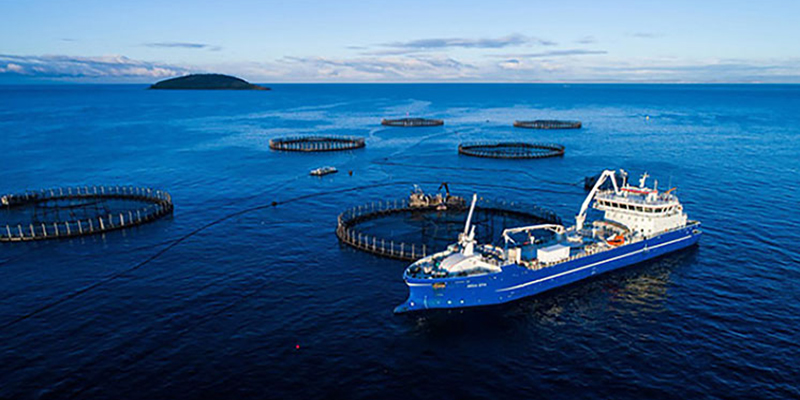The cargo ship and the tanker that collided on Monday in the North Sea off the coast of England were carrying kerosene, the release of which into the water raises concerns about pollution along the coastline and in two marine protected areas.
What Pollutants Did the Accidental Ships Contain?
The tanker Stena Immaculate, anchored offshore when it was struck by the cargo ship Solong, was transporting 16 tanks containing 220,000 barrels of kerosene, a petroleum derivative used as aviation fuel, according to Crowley, the company operating the vessel. The company reported that one of the tanks was damaged in the collision and that a leak had been detected.
The cargo’s contents are not known at this stage. However, its owner, the German company Ernst Russ, denied Tuesday morning media reports stating that sodium cyanide, a chemical compound that produces a highly flammable and toxic gas upon contact with water, was aboard.
The Solong was carrying empty containers that had previously held the « hazardous chemical, » the company clarified.
Finally, both vessels also carried their own fuel, either heavy fuel oil or marine diesel. The latter is lighter and dissipates more quickly in the environment.
If it is heavy fuel oil, “the problem will need to be addressed if the tanks haven’t burned,” said Nicolas Tamic, deputy director of Cedre, a French center specializing in accidental water pollution.
“As of now, no signs of pollution from the ships have been observed,” assured Mike Kane, Secretary of State for maritime and air safety at the Ministry of Transport, on Tuesday afternoon.
What Are the Environmental Risks?
The area where the collision took place, more than 20 kilometers off the coast of Yorkshire, is near two marine protected areas (Holderness Offshore and Southern North Sea), whose seabeds are known for their rich fauna and flora.
According to Tom Webb, a marine ecology lecturer at the University of Sheffield (North), the coastline around the Humber estuary is home to many bird species, particularly waders and other waterfowl.
“Chemical pollution from incidents like this can have a direct impact on birds and may also have long-term effects on the marine food chain,” he said.
Martin Slater, operations director at the Yorkshire Wildlife Trust, also expressed being “very concerned” about the threat to birds, especially puffin colonies, little auks, gannets, and tridactyl gulls, which usually gather offshore before the breeding season.
“If a pollution slick enters the Humber, it could be devastating for the estuary’s wildlife, particularly important fish stocks and tens of thousands of wintering and migratory birds that use the mudflats,” he said.
Is There a Risk of an Oil Spill?
Experts suggest that the risk of an oil spill remains low. Kerosene is “not persistent” like crude oil, explained Ivan Vince, director of ASK Consultants, an environmental risk safety firm.
“The majority will evaporate quickly,” and the rest “will be degraded relatively quickly by marine microorganisms,” he added.
Nicolas Tamic shares this view. “It’s impressive, but not necessarily very serious,” he emphasized. Kerosene “doesn’t cause an oil spill, rather an atmospheric pollution when burned.” “Very quickly, it blends into nature without harming ecosystems,” he added.
However, Ivan Vince warned that if the leak is significant, “currents could carry it to areas where it could cause more damage,” such as in the estuary, although the distance seems “relatively large.”
“The structural integrity of both vessels is being closely monitored,” and “anti-pollution measures and resources are already in place,” ready to be deployed when possible, stated the Secretary of State for maritime and air safety.
Source: Le devoir



